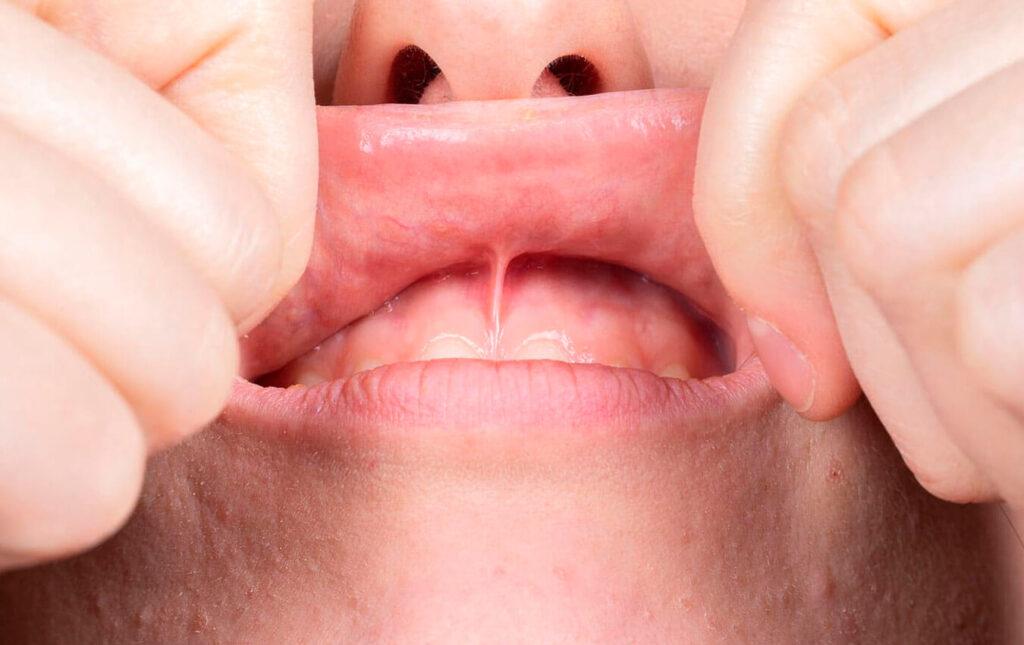
This frenum is larger to some people, fact which causes difficulties in speech since the tongue is not allowed to move freely. A lingual frenectomy is the procedure at the end of which this fold of tissue is removed, so that the tongue can move more freely. Usually, signs of frenum appear in childhood. Such symptoms which help discover the malformation in due time are: speech problems at an early age ( 12 to 18 months); the frenum under the children’s or teenager’s tongue becomes stuck between their front teeth; they cannot stick their tongue out as far as other children; the gum tissue is drawn away from the lower front teeth by the frenum. Other times a frenum connects the two upper front teeth. To remove this frenum, doctors recur to a procedure called labial frenectomy. This condition usually appears in children following the moment when their permanent upper front teeth have come in. Rarely, it can occur earlier, even before the baby teeth come in. A space between the two front teeth can appear in the case when the tissue is attached far down on the gum. The space can be closed by an orthodontist, but it can appear again because the frenum can repeatedly push the teeth apart. With adults, a frenectomy is needed if a frenum (usually one linking the cheek to the gum in the back of the mouth, or in the middle of the upper or lower lip) interferes with the denture’s fit.
Benefits
- Return the healthy balance to the mouth
- Improve speech
Who is this procedure for?
People whose mouths are affected by the existence of a frenum.
What happens before the procedure?
Before a frenectomy procedure is considered, dentists usually make analyses to see if there are any factors which could determine a natural fixing of the problem. If frenectomy is needed, preparing for general or local anesthesia is a must.
What happens during the procedure?
Frenectomy is performed by means of a laser or a scalpel. Using a laser as the instrument provides certain advantages such as reducing bleeding and the need for sutures, or provoking less pain. Laser using procedure requires stillness on the part of the patient during the operation. This is why general anesthesia is required for children, while local anesthesia is sufficient with adults. In the case of scalpel usage is used, sutures are needed. The surgery usually takes 10 to 15 minutes.
What happens after the procedure?
The problem is only healed several weeks after the frenectomy is performed. During all this time, pain may persist around the area, so dentist usually prescribe drugs such as pain releasers. Other recommendations refer to rinsing with salt water, brushing and flossing around in order to keep the area clean. Depending on the type of stitches used, patients may need to return to the dentist to have their stitches removed or they may dissolve on their own.

